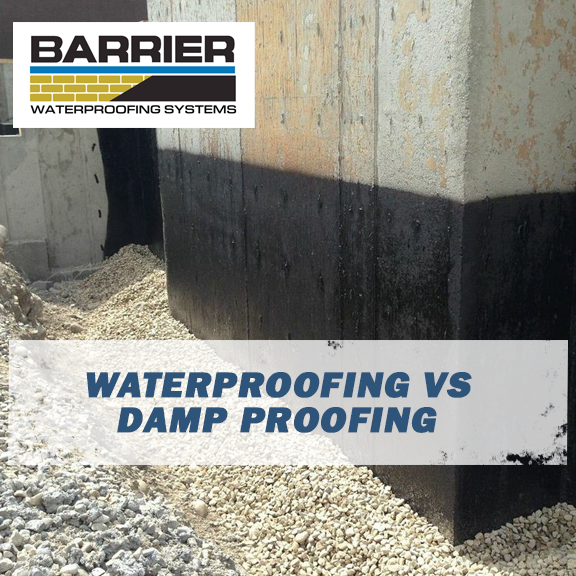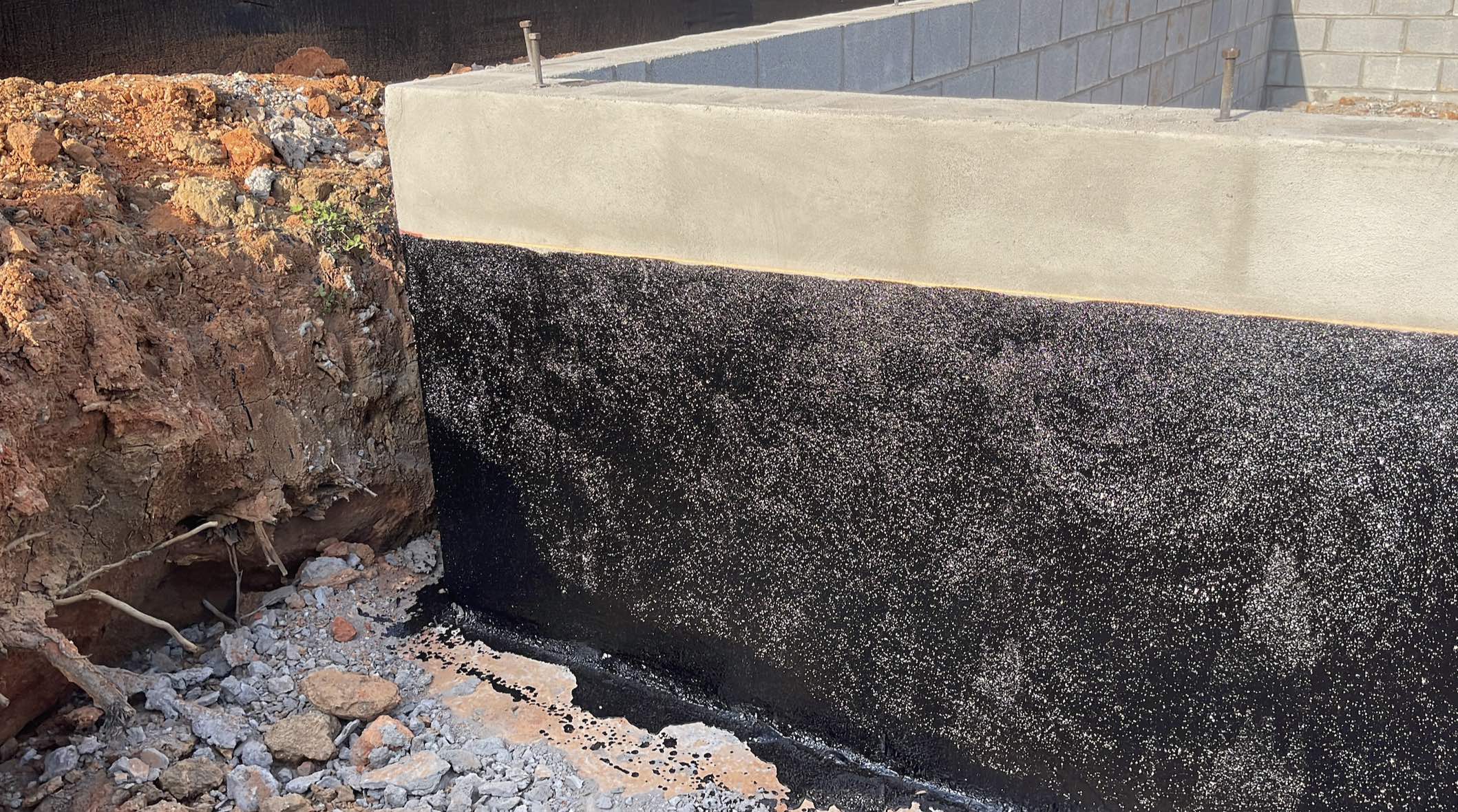Real reasons to hire a licensed damp specialist newcastle today
Discovering the Different Methods and Solutions for Effective Damp Proofing
Dampness in structures presents significant obstacles to both architectural stability and interior air quality. Numerous techniques and options have arised to fight this pervasive issue. From conventional damp-proof membrane layers to cutting-edge chemical therapies, each technique supplies distinct benefits. Recognizing these choices is important for effective dampness control. Nonetheless, selecting the best remedy relies on details structure conditions and needs, motivating further expedition into the most effective moist proofing approaches available.
Comprehending the Reasons For Dampness
Dampness can occur from different resources, comprehending these causes is crucial for efficient remediation. Frequently, moisture originates from 3 primary sources: increasing moist, passing through damp, and condensation. Increasing moist occurs when groundwater travels upwards through porous products, such as block or stone, often due to an absence of a reliable obstacle (mould removal newcastle). Penetrating damp is typically triggered by exterior factors, consisting of roof leaks, defective seamless gutters, or damaged walls, allowing water to penetrate a home. Condensation, on the various other hand, arises from excess moisture in the air, usually aggravated by poor ventilation and temperature differences, leading to water droplets basing on surfaces. Recognizing these underlying concerns is vital, as each kind of dampness requires a tailored technique for remediation. Correct evaluation helps in figuring out one of the most effective options, ultimately guarding the structural stability of a building and improving interior air high quality
Standard Damp-Proof Membrane Layers

Chemical Damp-Proofing Solutions
Chemical damp-proofing remedies supply a cutting-edge technique to preventing wetness invasion in buildings. These methods generally include the application of liquid chemicals that penetrate masonry and create an obstacle versus climbing wet. Typically made use of chemicals consist of silanes, siloxanes, and other water-repellent agents that respond with surface materials to produce a hydrophobic layer.The application process generally needs boring openings right into the walls, injecting the chemical option, and permitting it to cure. This technique is especially advantageous for older frameworks where traditional damp-proof membranes might be unwise. Chemical damp-proofing can be less disruptive and extra cost-effective than comprehensive renovation projects.While effective, these services depend on correct application and environmental problems for peak efficiency. damp proofing newcastle. Regular upkeep and monitoring are necessary to assure the long life of the damp-proofing therapy. Overall, chemical damp-proofing stands for a versatile choice for securing structures versus moisture-related damage
Cavity Wall Building Methods
Dental caries wall construction strategies use various benefits, particularly in moisture control and energy performance. By incorporating an air void between 2 layers of masonry, these wall surfaces effectively alleviate water access while boosting insulation. This mix not only secures frameworks from moisture yet likewise adds to reduced energy usage.
Advantages of Tooth Cavity Wall Surfaces
When considering efficient damp proofing methods, the benefits of cavity wall surfaces stick out plainly. Tooth cavity walls contain two separate layers, creating an air space that properly lowers moisture penetration. This style minimizes the danger of dampness, as the outer wall surface works as an obstacle versus rain and water ingress. In addition, tooth cavity walls improve thermal insulation, which adds to power performance by minimizing heat loss. They additionally give audio insulation, helping to create a quieter indoor environment. In addition, the air gap enables for air flow, which aids in dampness control and reduces the likelihood of mold and mildew development. These advantages not only enhance the general convenience of a structure however likewise add to its long life and architectural integrity.
Wetness Control Methods
Efficient moisture control strategies are important in tooth cavity wall building to ensure lasting protection against wetness. One main technique entails the unification of weep openings, which facilitate water drainage from the dental caries, stopping accumulation. In addition, using breathable membrane layers can assist take care of moisture degrees while permitting trapped vapor to leave. Correct positioning of insulation is also essential, as it must not block water drainage paths. Moreover, making certain that the external fallen leaves of the tooth cavity wall surface are created with waterproof materials boosts total sturdiness. Normal upkeep checks are necessary to recognize any clogs or damages early, safeguarding the structure's stability. Ultimately, a combination of these strategies forms a durable protection versus wetness intrusion in dental caries walls.
Insulation and Power Performance
Insulation plays an important function in improving energy performance within dental caries wall surface construction. By including insulating products, these wall surfaces develop a thermal barrier that minimizes warm loss and reduces energy intake. Reliable insulation not just aids maintain a steady interior temperature level yet additionally alleviates the danger of wetness, as it avoids condensation within the wall surface tooth cavity. Numerous techniques, such as using inflexible foam boards or mineral wool, can be utilized to attain excellent insulation efficiency. Furthermore, proper setup is vital to guarantee that gaps and gaps are minimized, which can or else endanger power effectiveness. Eventually, a well-insulated dental caries wall surface adds greatly to general sustainability and lowers heating and cooling expenses for property owners.
Outside Damp Proofing Methods
Exterior wet proofing methods are important for protecting frameworks from wetness seepage. 2 effective methods consist of the application of waterproof membrane layers and the installation of French drains. These options assist mitigate water build-up and maintain the honesty of buildings.
Waterproof Membrane Application
While different methods exist for stopping moisture ingress, the application of waterproof membrane layers remains a highly effective external damp proofing strategy. These membranes are typically made from products such as polyethylene, rubber, or changed asphalt, supplying a durable barrier versus water penetration. The setup process involves using the membrane to the external surfaces of structures or walls, making sure full coverage to protect against leakages. Appropriate bond and securing at joints are critical to making best use of performance. Water-proof membrane layers can be applied in various types, consisting of liquid coatings and sheet membranes, permitting versatility based on the certain demands of the structure. This method not just safeguards structures from wetness but likewise enhances their longevity and architectural integrity.
French Drainpipe Setup
One efficient method for taking care of groundwater and avoiding moisture accumulation around a structure's structure is the setup of a French drain. This drainage system contains a trench full of crushed rock and a perforated pipeline that reroutes surface area water away from the structure. Correct setup requires mindful planning, ensuring that the drainpipe slopes far from the framework to assist in optimal water flow. Additionally, the location of the drainpipe is crucial; it should be placed in locations susceptible to pooling or excess moisture. Normal maintenance, consisting of clearing up particles from the crushed rock and guaranteeing the pipe remains unblocked, is important for long-term performance. Inevitably, a well-installed French drain can significantly minimize the threat of water-related issues in cellars and foundations.
Inside Waterproofing Approaches
Interior waterproofing strategies are important for shielding a structure's interior from moisture seepage and prospective water damages. These strategies commonly entail the application of customized materials and methods made to produce a dampness barrier within the structure. One common technique is the usage of water-proof finishings or sealers on walls and floorings, which avoid wetness from permeating surfaces.Additionally, setting up indoor water drainage systems, such as sump pumps, can effectively manage water buildup in basements and crawl areas. Another technique entails using vapor barriers, which are installed to inhibit moisture movement from the ground right into living spaces.Moreover, attending to any type of splits or spaces in walls or foundations with ideal sealants ensures a complete protection against water breach. By carrying out these interior waterproofing methods, property proprietors can greatly reduce the danger of mold and mildew development, architectural damages, and various other moisture-related problems. Proper execution of these methods is necessary for long-lasting defense and building integrity.
Regular Maintenance and Examination Practices
Normal upkeep and examination methods are essential for guaranteeing the long-term performance of damp proofing options in any type of building. Routine checks make it possible for home proprietors to identify very early signs of dampness invasion, such as peeling paint, mold and mildew development, and musty odors. These indicators can signal underlying problems that call for instant attention.Inspections must be carried out at the very least every year, concentrating on vulnerable locations like basements, creep rooms, and exterior wall surfaces. Throughout these evaluations, homeowner ought to examine sealers, drainage systems, and air flow to verify they operate correctly.Additionally, preserving downspouts and seamless gutters is crucial, as blocked systems can cause water build-up near the foundation. Executing a regular maintenance schedule, together with prompt repair services, can substantially prolong the life-span of wet proofing actions and protect the structural honesty of the structure. Aggressive procedures inevitably add to the total health and wellness of the living environment.
Frequently Asked Concerns
How Much Time Does Damp Proofing Generally Last?
The duration of wet proofing efficiency varies, typically lasting between 20 to 50 years. Aspects such as application high quality, ecological conditions, and maintenance practices significantly influence the long life of the wet proofing treatment.

Can I Damp Evidence My Home Myself?
The specific contemplated the feasibility of DIY damp proofing. With appropriate research and the ideal products, it is feasible. Nevertheless, they also acknowledged the relevance of specialist support to guarantee resilient efficiency and avoid future problems.
What Are the Signs of Inadequate Damp Proofing?
Indications of inadequate moist proofing consist of relentless mildewy odors, noticeable mold development, peeling paint, wet spots on walls, and timber decay - damp proofing newcastle. Homeowners must deal with these concerns immediately to prevent more damages and health concerns
Does Damp Proofing Affect Indoor Air High Quality?

Just How Much Does Expert Damp Proofing Cost?
Professional damp proofing costs differ substantially, generally ranging from $1,000 to $5,000 depending on the property's dimension, the degree of the damp issue, and chosen techniques. Each situation requires a customized assessment for precise rates. Commonly, moisture stems from three key sources: rising wet, permeating moist, and condensation. When taking into consideration reliable wet proofing approaches, the benefits of tooth cavity wall surfaces stand out prominently. External damp proofing methods are necessary for safeguarding structures from dampness seepage. While various methods exist for preventing read more wetness ingress, the application of water resistant membrane layers remains a very reliable external moist proofing technique. Signs of ineffective damp proofing consist of relentless musty smells, noticeable mold development, peeling paint, moist patches on walls, and wood decay.